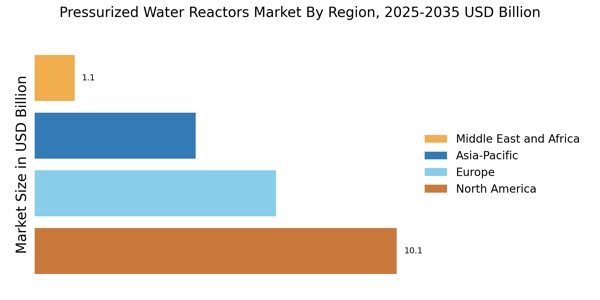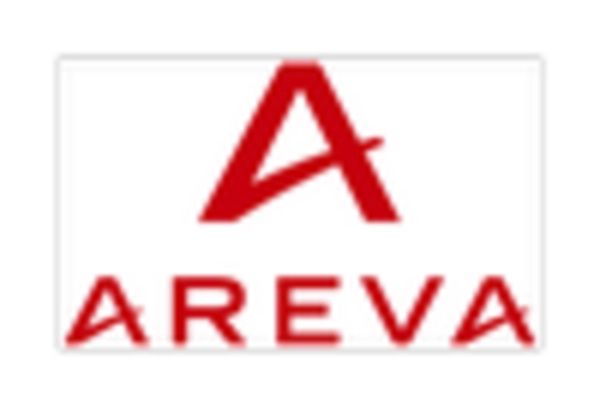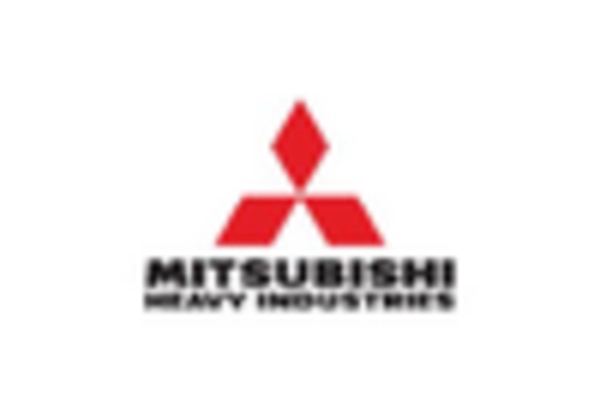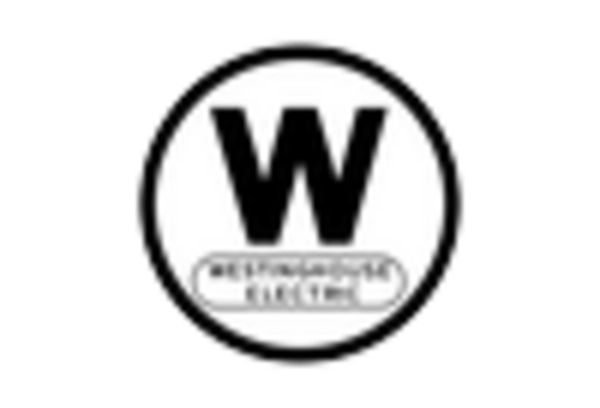Rising Energy Demand
The increasing The Pressurized Water Reactors Industry. As populations grow and economies expand, the need for reliable and efficient energy sources intensifies. According to recent data, electricity consumption is projected to rise by approximately 2.5% annually, necessitating the development of new power generation facilities. Pressurized water reactors, known for their efficiency and safety, are positioned to meet this demand. The shift towards low-carbon energy sources further emphasizes the role of nuclear power in achieving energy security. Consequently, investments in pressurized water reactors are likely to increase, as they provide a stable and sustainable energy solution.
Focus on Energy Security
The emphasis on energy security is increasingly driving the Pressurized Water Reactors Market. Nations are recognizing the importance of diversifying their energy portfolios to reduce dependence on imported fossil fuels. Pressurized water reactors provide a stable and domestic source of energy, which is particularly appealing in the context of geopolitical uncertainties. As countries seek to enhance their energy independence, investments in nuclear power are likely to rise. This trend is further supported by the need for reliable baseload power generation, which pressurized water reactors are well-suited to provide, ensuring a consistent energy supply.
Advancements in Nuclear Technology
Technological advancements in nuclear reactor design and safety systems are significantly influencing the Pressurized Water Reactors Market. Innovations such as improved fuel efficiency, enhanced safety features, and advanced containment systems are making pressurized water reactors more appealing to energy producers. For instance, the development of Generation III+ reactors, which offer better thermal efficiency and reduced waste, is gaining traction. These advancements not only enhance operational performance but also address public safety concerns, thereby fostering greater acceptance of nuclear energy. As a result, the market for pressurized water reactors is expected to expand, driven by the need for modernized and efficient energy solutions.
Government Policies and Incentives
Supportive government policies and incentives play a crucial role in shaping the Pressurized Water Reactors Market. Many countries are implementing frameworks that promote nuclear energy as a viable alternative to fossil fuels. For example, tax incentives, subsidies, and streamlined regulatory processes are being introduced to encourage investment in nuclear infrastructure. This regulatory support is essential for the construction and operation of new pressurized water reactors, as it mitigates financial risks for investors. Furthermore, international agreements aimed at reducing carbon emissions are likely to bolster the nuclear sector, positioning pressurized water reactors as a key component in achieving climate goals.
Environmental Sustainability Initiatives
The growing focus on environmental sustainability is a significant driver for the Pressurized Water Reactors Market. As concerns about climate change intensify, there is a concerted effort to transition towards low-carbon energy sources. Nuclear power, particularly through pressurized water reactors, is recognized for its ability to generate large amounts of electricity with minimal greenhouse gas emissions. This aligns with global sustainability goals and the push for cleaner energy solutions. Consequently, investments in pressurized water reactors are likely to increase as governments and organizations prioritize sustainable energy practices, further solidifying the role of nuclear energy in the future energy landscape.


















Leave a Comment